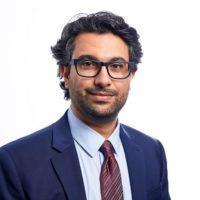Gas and oil activity linked to increased earthquake risk across the region
High value infrastructure and a complex tectonic setting means that the Middle East is especially susceptible to large losses and major catastrophes.
That was one of the major insights from the breakout session, ‘The importance of earthquake catastrophe risk assessment in the Middle East’, at Day One of the Dubai World Insurance Congress 2023.
Featuring insights from Verisk, including from its senior principal engineer Dr Arash Nasseri, delegates were provided insights on how the Middle East is facing earthquake risk specific to the region’s unique make-up.
Using catastrophe modeling on earthquakes in the region, it was discovered that earthquakes are less frequent, but the impacts in the region are often larger with several aftershocks.
Tectonic setting
“The Middle East is in a complex tectonic setting, with several Category 7 and higher events, especially in the northern part of the region,” delegates were told.
“Due to the tectonic plate boundaries in the region, there is heightened activity around the Red Sea and the Gulf of Aden, and this has resulted in a lot of activity happening in certain parts of Iran.”
This setting also means the region endures widespread aftershocks and building shaking. Kuwait, Bahrain, Qatar, UAE and Saudi Arabia can feel strong shaking from events elsewhere in the region, including from incidents at far-away locations.
Capital at risk
The success and affluence of the region also means there is the potential for high value losses, with large and expensively constructed infrastructure at risk.
“There is large exposure accumulation across the region, underscoring the need for catastrophe modeling in the region,” said Nasseri.
“However, for large magnitude events there is often not enough data. As such, when it comes to modeling, historical data is supplemented with fault models and strain rate data.”
Industrial causes
The region has a highly active gas and oil industry – one of the primary sources of the region’s success – but this is causing an increased risk of earthquake events.
“There has been increased seismicity observed near oil and gas field in Kuwait, with the modeling showing an increased risk of hazards in these areas as a result.”
Self-constructed islands, popular across the region, have the potential for high-value exposures and are prone to liquefaction – which occurs when loosely packed sediments lose their strength in response to strong ground shaking.
Underinsured
Despite the economic successes of the region, underinsurance remains an major issue. Across several countries, there is a sizable earthquake protection gap.
“On average, the protection gap for countries in the Middle East is around 60%. That is based on insured losses, so does not cover the true economic loss, meaning that 60% gap would be even higher.
“While this is an issue for those countries currently, it also provides an opportunity for the insurance industry to expand in this region,” Nasseri added.











No comments yet